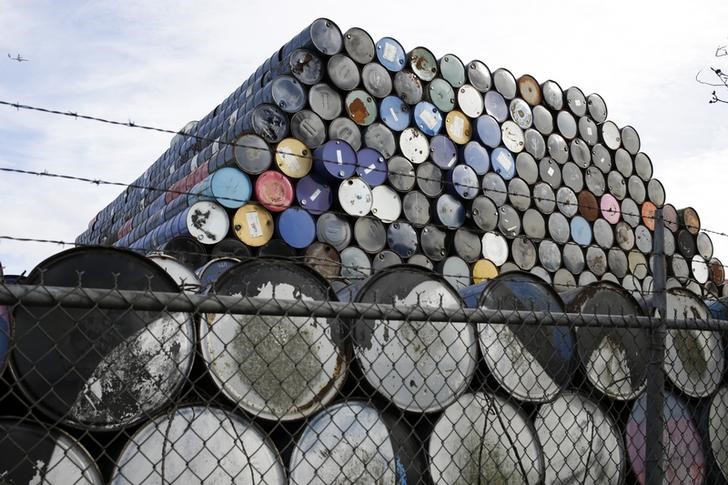* Dollar hits 18-month low against Japan's yen
* But signs of supply overhang persist
* Iraq's southern oil field exports hit 3.364 mln bpd
* Saudi, Iranian production also rising (Adds comment, physical crude price, updates futures prices)
By Henning Gloystein
SINGAPORE, May 3 (Reuters) - Oil prices rose by more than 1 percent on Tuesday as the dollar slipped to an 18-month low against the yen, potentially spurring fuel demand, although gains were restricted by rising Middle East output that renewed concerns of a global supply overhang.
Brent crude futures LCOc1 were trading at $46.29 per barrel at 0729 GMT, up around half a dollar or 1 percent from their last close. U.S. crude futures CLc1 were also up almost half a dollar and more than 1 percent at $45.25 a barrel.
There were similar moves in physical oil markets, where Dubai crude, as quoted by price-reporting agency Platts, rose to an average of $39.028 a barrel for April, the highest in five months, traders said on Tuesday. oil prices came as the dollar slumped, which makes purchases of dollar-denominated commodities cheaper for countries using other currencies, potentially spurring demand and investor interest.
The dollar has lost more than 7 percent of its value this year against a basket of other leading currencies .DXY , hitting an 18-month low against Japan's yen JPY= on Tuesday. Chauhan of Energy Aspects said the weak U.S. dollar was a factor in rising oil prices, but also pointed to a "sentiment shift", with significant passive and commodity trading advisor (CTA) money flows back into energy after two years out.
Traders said, however, the gains were capped by rising output in the Middle East as well as fears over China's economic health after factory activity shrank for a 14th straight month in April. said China's oil demand grew by 180,000 barrels per day (bpd) in the first quarter, smaller than in previous years.
"A key area to watch is the Chinese car industry," the bank said.
China's car sales have been strong, but many analysts expect growth to fizzle as a government incentive scheme to support sales ends by the end of 2016.
On the production side, Iraq said its oil shipments from southern fields were at an average of 3.364 million bpd in April, up from 3.286 million in March. from top exporter Saudi Arabia was 10.15 million bpd in April, but sources said it may return to near-records of 10.5 million bpd soon. is also raising output following an end to sanctions in January, having increased its exports to almost 2 million bpd from a little over 1 million bpd at the start of the year. Middle East supply jump counters declines in the United States, where production has slumped from a peak of around 9.6 million bpd in June 2015 to below 9 million bpd now, according to government data.
This helped lift crude by almost 70 percent from decade lows hit in early 2016.
